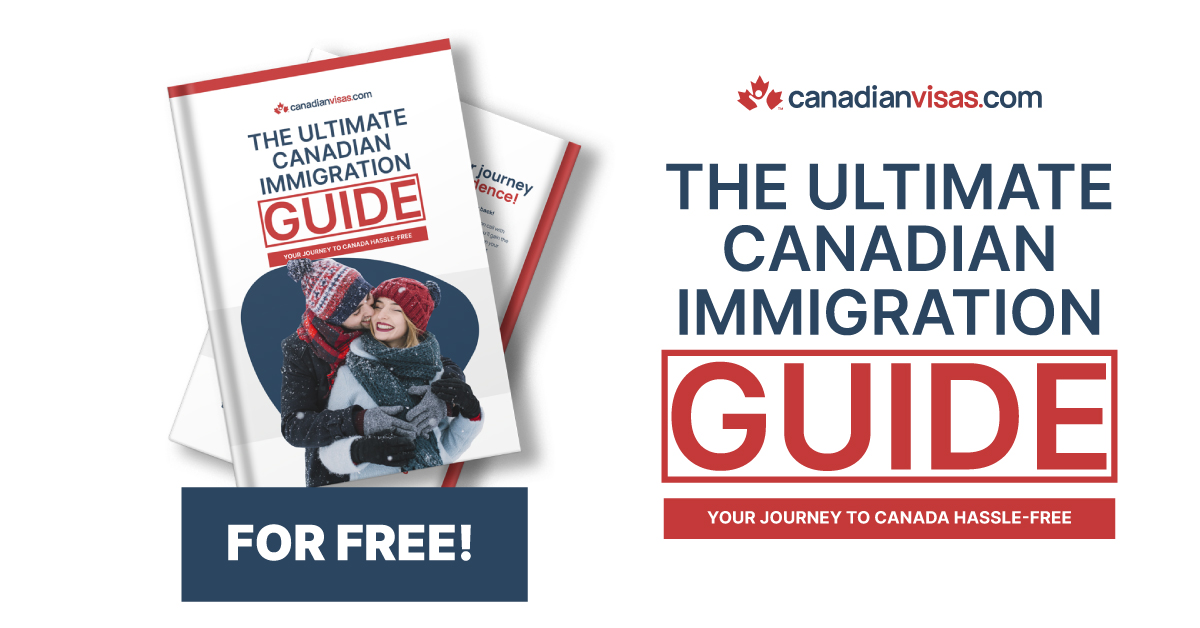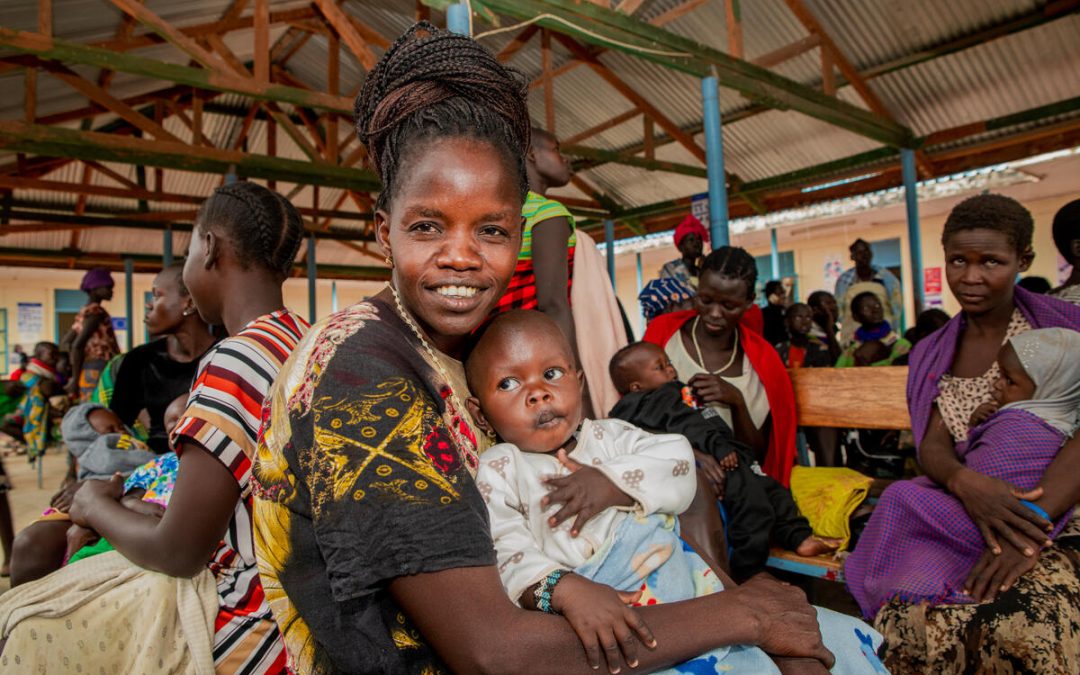
Mar 7, 2024 | Blog, Canadian Employers, Federal Skilled Trades, Immigration, In the News, New Immigration Programs, New Laws, Skilled Workers, Working In Canada
Provincial Nominee Programs (PNPs) offer a compelling pathway to permanent residency for skilled workers, entrepreneurs, and individuals with strong ties to a specific province or territory. Launched in 1999, PNPs empower provinces and territories to address their unique labor market needs and economic development goals by selecting immigrants who are a perfect fit.
Understanding the PNP Landscape
PNPs operate independently from the federal Express Entry system, offering a valuable alternative for those who may not meet Express Entry’s criteria. Each province and territory designs its own PNP with a distinct set of eligibility requirements, application processes, and immigration streams. This diversity allows you to tailor your immigration journey based on your skills, experience, and aspirations.
A Spectrum of Streams
PNPs cater to a wide range of applicants through diverse immigration streams. Here are some of the most common:
- Skilled Worker Streams: Ideal for individuals with in-demand skills and work experience aligning with provincial labor market needs. These streams may target specific occupations, educational backgrounds, or language proficiency.
- Business Immigration Streams: Attract entrepreneurs, investors, and business owners who can contribute to the province’s economic growth. These streams often require business ownership or investment plans, accompanied by job creation potential.
- Family Sponsorship Streams: Allow Canadian citizens and permanent residents to sponsor close relatives for permanent residency. Some PNPs offer expedited processing times or lower eligibility requirements for family members.
- Graduate Streams: Designed to attract and retain international graduates with valuable skills and Canadian educational credentials. These streams may offer bonus points for those who studied in the province.
- Atlantic Immigration Pilot: A unique federal-provincial collaboration offering permanent residency to skilled workers and international graduates seeking to live and work in Atlantic Canada (Nova Scotia, New Brunswick, Prince Edward Island, and Newfoundland and Labrador).
Benefits Beyond Processing Speed
While faster processing times compared to traditional immigration streams are a significant advantage, PNPs offer additional benefits:
- Increased Success Rates: PNPs can provide an alternative pathway for those who may struggle to meet the competitive point requirements of Express Entry.
- Provincial Support: Many PNPs offer settlement services to help nominees integrate smoothly into their new communities. This includes language training, job search assistance, and information on housing, healthcare, and education.
- Targeted Opportunities: Aligning your skills and experience with a specific province’s needs can lead to better job prospects and a smoother transition into the Canadian workforce.
Determining Your Eligibility
Eligibility for PNPs varies greatly, but common factors include:
- Age: Most PNPs target working-age individuals.
- Education: Specific educational qualifications or Canadian educational credentials may be required.
- Work experience: Relevant work experience in skilled trades or professions is often sought after.
- Language proficiency: English or French language skills are typically required, with varying proficiency levels depending on the stream.
- Connection to the province: Some PNPs prioritize applicants with existing ties to the province, such as previous work experience or family connections.

https://bit.ly/TheUltimateCanadianImmigrationGuide
Navigating the Application Process
The application process for PNPs can be complex and vary depending on the province or territory. Here’s a general roadmap:
- Research and Identify: Explore the PNPs of your preferred provinces and assess your eligibility based on their specific requirements.
- Create an Online Profile: Some PNPs require an online profile where you can submit an Expression of Interest (EOI) outlining your skills and experience.
- Receive an Invitation to Apply (ITA): If your profile aligns well with a program’s needs, you may receive an ITA to submit a formal application for a provincial nomination.
- Application and Supporting Documents: Complete the application form and gather all required documents, such as proof of education, work experience, language proficiency, and financial resources.
- Provincial Nomination: Upon successful application review, you will receive a provincial nomination certificate.
- Permanent Residency Application: Use your nomination certificate to apply for permanent residency through Express Entry (if applicable) or directly with IRCC.
Popular PNP Options
Several PNPs consistently rank high for their efficiency and diverse streams. Here are some of the most popular:
- Alberta Immigrant Nominee Program (AINP): Offers skilled worker, entrepreneur, and graduate streams.
- British Columbia Provincial Nominee Program (BC PNP): Features skilled worker, entrepreneur, and international graduate streams.
- Ontario Immigrant Nominee Program (OINP): Caters to a wide range of applicants through various streams, including skilled workers, entrepreneurs, and French-speaking skilled workers.
- Saskatchewan Immigrant Nominee Program (SINP): Focuses on attracting skilled workers in occupations facing labor shortages.
-
Manitoba Provincial Nominee Program (MPNP): This program boasts a streamlined process and diverse streams, including skilled workers, entrepreneurs, and business manager categories. The MPNP is known for its focus on attracting newcomers to settle outside of Winnipeg, the provincial capital.
-
Quebec Experience Class (PEQ): Operates independently of the federal Express Entry system and caters to skilled workers, students, and business people with experience in Quebec. French language proficiency is a mandatory requirement for the PEQ.
-
Nova Scotia Nominee Program (NSNP): Offers a variety of immigration streams, including skilled worker, entrepreneur, and Atlantic Immigration Pilot options. The NSNP is particularly attractive for those seeking a welcoming and affordable Atlantic Canadian lifestyle.
-
Prince Edward Island Provincial Nominee Program (PEI PNP): This program prioritizes attracting skilled workers and entrepreneurs with genuine interest in settling and contributing to Prince Edward Island’s economy. The PEI PNP is known for its efficient processing times and focus on smaller communities.
-
Newfoundland and Labrador Provincial Nominee Program (NL PNP): Designed to address the province’s labor market needs, the NL PNP offers skilled worker and employer sponsorship streams. This program is ideal for those seeking an opportunity in a beautiful and resource-rich province.
Maximizing Your PNP Success
Obtaining a provincial nomination can significantly increase your chances of securing permanent residency in Canada. Here are some strategies to enhance your PNP application:
- Target the Right Province: Research provincial labor market needs and align your skills and experience with the in-demand occupations listed by your preferred PNP.
- Boost Your Language Skills: Strong English or French language proficiency is crucial. Consider taking language tests and aiming for higher scores to improve your competitiveness.
- Highlight Your Canadian Ties: If you have any previous work experience or family connections in your target province, emphasize them in your application. This demonstrates your established ties to the community and commitment to settling there.
- Seek Professional Guidance: Immigration consultants can provide valuable assistance in navigating the complexities of PNP applications and tailoring your profile for success.
- Consider Additional Qualifications: Earning a Canadian educational credential or gaining relevant work experience in Canada can significantly strengthen your application.
Life After PNP
Receiving a provincial nomination is a significant step towards your Canadian dream. However, the journey doesn’t end there. Here are some additional considerations:
- Settlement Services: Many provinces offer settlement services to help newcomers integrate into their new communities. Take advantage of these resources to learn about Canadian culture, find employment, and adjust to your new life.
- Building Your Network: Networking with professionals in your field and joining community organizations can facilitate your job search and overall integration into Canadian society.
- Continuing Education: Consider pursuing further education or professional development opportunities to enhance your skills and qualifications, increasing your employability in the Canadian job market.
Conclusion
Provincial Nominee Programs offer a strategic pathway to Canadian permanent residency. By understanding the diverse PNP landscape, exploring your options, and preparing a compelling application, you can increase your chances of building a successful future in Canada. Start today and unlock the exciting possibilities that PNPs offer!

https://bit.ly/TheUltimateCanadianImmigrationGuide

Mar 6, 2024 | Blog, Canadian Employers, Federal Skilled Trades, Immigration, In the News, New Immigration Programs, New Laws, Skilled Workers, Working In Canada
Launched in 2015, Express Entry has become the primary pathway for skilled workers to obtain Canadian permanent residency. This innovative system streamlines the immigration process, ranking candidates based on their human capital factors and inviting those with the highest scores to apply for permanent residency.
How Express Entry Works
1. Eligibility
To be eligible for Express Entry, you must meet the minimum requirements under one of the three federal programs:
-
Federal Skilled Worker Program (FSWP):
- Requires at least one year of continuous, full-time (or equivalent part-time) paid work experience in the past 10 years in an occupation classified under National Occupational Classification (NOC) Skill Level 0, A, or B.
- Possess a valid Educational Credential Assessment (ECA) from a designated organization proving your foreign education is equivalent to a Canadian educational credential.
- Demonstrate proficiency in English or French by meeting the minimum Canadian Language Benchmark (CLB) score of 7 in all four abilities (reading, writing, listening, and speaking) through an IRCC-approved language test.
- Meet the minimum points requirement in the Comprehensive Ranking System (CRS).
-
Federal Skilled Trades Program (FSTP):
- Targets skilled workers in specific trades facing labor shortages in Canada, as listed on the In-Demand Skills List.
- Requires a minimum of two years of continuous, full-time (or equivalent part-time) paid work experience in the past 10 years in a qualifying skilled trade.
- Must possess a valid Certificate of Qualification from a provincial or territorial regulatory body in Canada for your specific trade.
- Demonstrate proficiency in English or French by meeting the Canadian Language Benchmark (CLB) score of 7 in all four abilities.
- Meet the minimum points requirement in the CRS.
-
Canadian Experience Class (CEC):
- Offers a pathway for skilled workers who have gained at least one year of continuous, full-time (or equivalent part-time) skilled work experience in Canada within the past 3 years.
- Must have held a valid Canadian work permit for the skilled work experience.
- Demonstrate proficiency in English or French by meeting the minimum Canadian Language Benchmark (CLB) score of 7 in all four abilities.
- Meet the minimum points requirement in the CRS.

2. Building Your Express Entry Profile
Once you’ve confirmed your eligibility, it’s time to create your Express Entry profile. This online profile is where you showcase your skills and experience to IRCC. Be sure to meticulously fill out all sections, including:
- Work Experience: Detail your work history, including job titles, duties, employers, and employment dates.
- Education: Provide details of your educational qualifications, including diplomas, degrees, and institutions attended.
- Language Skills: Submit results from approved language tests to demonstrate your English or French proficiency.
- Adaptability: Include information about your spouse/common-law partner’s education and work experience, as well as any previous Canadian study or work experience you may have.
3. The Comprehensive Ranking System (CRS)
The CRS is the heart of Express Entry. It assigns points based on various factors that contribute to your potential success as a Canadian permanent resident. These include:
- Age: Younger applicants receive higher points.
- Education: Points are awarded based on your educational qualifications and their Canadian equivalency.
- Work Experience: Points are granted for skilled work experience relevant to your NOC code and Canadian labor market needs.
- Language Proficiency: Your proficiency in English or French significantly impacts your CRS score.
- Skill Transferability: Points are awarded for factors that demonstrate your ability to adapt and succeed in the Canadian workplace, such as your spouse/common-law partner’s skills and qualifications.
4. Enter the Express Entry pool
Your profile will be placed in the pool where it will be compared against other candidates.
5. Receive an Invitation to Apply (ITA)
Periodically, Immigration, Refugees and Citizenship Canada (IRCC) invites candidates with the highest CRS scores to apply for permanent residency.
6. Applying for Permanent Residency
If you receive an ITA, congratulations! You’ll have 60 days to submit a complete permanent residence application, including supporting documents such as:
- Medical examinations
- Police certificates
- Proof of work experience and education
- Proof of funds
Factors Affecting Your CRS Score
- Age
- Education
- Work experience
- Language proficiency (English or French)
- Adaptability (spouse/common-law partner factors, Canadian work experience, etc.)
Maximizing Your CRS Score
A high CRS score is crucial for receiving an Invitation to Apply (ITA) from IRCC. Here are some strategies to enhance your CRS score:
- Improve Language Skills: Aim for higher scores in English or French language tests.
- Gain Additional Canadian Work Experience: Work experience in Canada carries significant weight in the CRS point system.
- Pursue Higher Education in Canada: Obtaining a Canadian educational credential can boost your score.
- Explore Provincial Nomination Programs (PNPs): Many PNP programs align with Express Entry, offering additional CRS points if you receive a nomination from a specific province.
- Consider a Spouse or Common-Law Partner: Their education, work experience, and Canadian ties can positively affect your CRS score.
Benefits of Express Entry
Express Entry offers several advantages compared to traditional immigration streams:
- Faster Processing Times: Applications are typically processed much quicker through Express Entry.
- Transparent System: The point-based system ensures a clear and meritocratic selection process.
- Flexibility: Successful applicants can choose where to live and work in Canada (with some exceptions).
Conclusion
Express Entry is a powerful tool for skilled workers seeking to build a life in Canada. By understanding the eligibility requirements, optimizing your CRS score, and exploring additional options, you can significantly increase your chances of receiving an invitation to apply for permanent residency. Start your journey today and unlock the possibilities that Canada has to offer!


Feb 24, 2024 | Blog, Canadian Employers, Federal Skilled Trades, Immigration, In the News, New Immigration Programs, New Laws, Skilled Workers, Working In Canada
The Canadian government announced on Friday the launch of a new family-based humanitarian pathway for Sudanese refugees and nationals who were residing in the country on April 15, 2023. The aim is to allow these individuals to reunite permanently with their family members in Canada.
How to get more information about the new humanitarian pathway
For more information on the new humanitarian pathway, including how to apply, visit the official IRCC website.
Generally speaking, Individuals can make a refugee claim in Canada at a port of entry upon arrival or online if already in Canada. CBSA or IRCC officials will determine if an individual is eligible to be referred to the Immigration and Refugee Board for a hearing. Factors determining an individual’s eligibility to make a refugee claim include whether the claimant has committed a serious crime, made a previous claim in Canada, made a claim in another country with which Canada shares immigration information, or received protection in another country.
Why was the new humanitarian pathway created?
The Canadian government created the new humanitarian pathway in response to the ongoing crisis in Sudan. The country has been engulfed in conflict since April 2023, which has caused a severe humanitarian crisis.
What other measures has Canada taken to help those affected by the crisis in Sudan?
In 2023, Canada allocated over $165 million in humanitarian assistance funding to experienced partners in Sudan and neighboring countries impacted by the crisis. In addition to the measures announced on Friday, Canada has already announced temporary measures for Sudanese nationals:
- Allowing Sudanese nationals in Canada to apply to extend their stay or change their status as a visitor, student or temporary worker, free of charge.
- Waiving the application fees for temporary residence for foreign nationals who fled Sudan with their Canadian family members.
What impact will the new humanitarian pathway have?
The new humanitarian pathway will allow thousands of Sudanese refugees and nationals to reunite with their family members in Canada and start a new life in a safe and prosperous country.

Feb 5, 2024 | Blog, Canadian Employers, Federal Skilled Trades, Immigration, In the News, New Immigration Programs, New Laws, Skilled Workers, Working In Canada
Canada’s healthcare system, long lauded for its universal coverage, faces a stark reality: a critical shortage of family doctors. This deficit, widening against a backdrop of rapid population growth, threatens equitable access to primary care for millions of Canadians. Understanding the complex interplay of factors driving this shortage and exploring the multifaceted solutions being implemented is crucial to ensuring a sustainable healthcare system for the future.
Contributing Factors
At the heart of the issue lies a mismatch between demand and supply. Canada’s population has burgeoned by over 5 million in the past decade, placing immense strain on existing healthcare infrastructure. Yet, the number of medical residencies dedicated to family medicine has barely budged, creating a significant gap between available practitioners and the population’s needs.
Further compounding the problem is a declining interest in family medicine among medical graduates. The allure of lucrative specializations like emergency medicine or anesthesiology, coupled with the perceived challenges of primary care, is drawing talent away from this crucial field. This trend, documented by the Canadian Resident Matching Service, has seen the percentage of graduates choosing family medicine drop by over 7% in the past nine years.
Untapped Potential and Streamlined Integration
Recognizing the limitations of solely relying on domestic training, Canadian policymakers are turning their attention to international medical graduates (IMGs). These skilled professionals hold immense potential to bolster the healthcare workforce. However, their path to practice in Canada is often fraught with hurdles, including lengthy credential recognition processes and limited residency opportunities.
Fortunately, recent initiatives aim to unlock this untapped potential. The federal government’s investment of $86 million in foreign credential recognition programs will expedite the process, allowing IMGs to contribute their expertise sooner. Additionally, targeted Express Entry draws prioritize healthcare workers, streamlining their immigration and integration into the Canadian system.
Building a Robust Pipeline for the Future
While leveraging international talent offers immediate relief, long-term solutions require increasing domestic training capacity. Several provinces are taking decisive action. Ontario is spearheading the expansion of postgraduate medical training spaces, with a commitment to add 449 positions over the next five years. This bold move will inject much-needed new physicians into the workforce.
Further bolstering the pipeline are groundbreaking developments like the establishment of new medical schools in Prince Edward Island and British Columbia. These institutions, slated to open in 2025 and 2026 respectively, represent a significant investment in the future of healthcare, promising to graduate future generations of family physicians equipped to serve the evolving needs of the population.
Beyond Numbers: Fostering a Thriving Family Medicine Landscape
While expanding training opportunities and integrating foreign talent are crucial steps, addressing the root causes of declining interest in family medicine is equally important. Initiatives that enhance job satisfaction, promote work-life balance, and provide mentorship opportunities can make family practice a more attractive career choice for aspiring medical professionals.
A Collaborative Path Forward
Canada’s family doctor shortage presents a complex challenge, demanding a multifaceted response. By implementing a combination of strategies – from attracting international talent and expanding training capacity to fostering a more appealing family medicine landscape – stakeholders at all levels can work together to build a more resilient and accessible healthcare system for all Canadians. The journey ahead requires sustained commitment and collaboration, but the collective effort holds the promise of a brighter future where high-quality primary care is available to everyone who needs it.
Get a consultation with our immigration experts to answer your questions, clear up confusion, and guide you every step of the way.

Sep 18, 2023 | Blog, Express Entry, Federal Skilled Trades, Immigrate to Canada, Immigration, In the News, New Immigration Programs, New Laws, Provincial Nominee Program, Skilled Workers, Temporary Foreign Workers, Work Permits, Working In Canada
Canada launches new Express Entry for transport workers under a new category-based selection process to invite skilled newcomers with work experience in the transport sector to apply for permanent residence. This includes occupations such as commercial truck drivers, pilots, and aircraft assembly workers.
The IRCC announced that the first round of invitations for transport occupations through category-based selection in Express Entry will occur this week.
The new process will help to address labour shortages in the transport sector and support Canada’s economic growth. Category-based selection will allow Canada to invite candidates with the specific skills and experience that are needed to fill key positions.
Canada’s Express Entry system is now tailored to provide a streamlined and efficient pathway for individuals with expertise in critical fields. By prioritizing the invitation of skilled newcomers with work experience in transport occupations, Canada aims to meet the increasing demand for talent and fill key positions that contribute to the nation’s economic growth and advancement.
Category-based selection rounds will continue throughout the year, alongside general and program-specific invitation rounds.
Quotes:
“As Canada grows its economy, we’re committed to improving transport and infrastructure to ensure the safe and efficient movement of goods and passengers across the country. Category-based selection helps us invite newcomers with experience in transport occupations to fill significant labour gaps and ensure the future success of the Canadian transport sector. I look forward to welcoming more skilled workers to our country, as their knowledge and expertise are invaluable, to meet our labour market needs.”
– Marc Miller, Minister of Immigration, Refugees and Citizenship
“The transportation sector is crucial to our economy, and if we want to keep things moving, we need to invest in the people that move travellers and transport our goods. With this new initiative, we are helping address a critical skills shortage while also attracting new, talented people to communities across Canada. Truck drivers, pilots, aviation mechanical engineers and seafarers play a critical role in our economy and Canadians’ lives. Filling vacancies in these professions will boost economic growth and create stronger and more resilient supply chains.”
– Pablo Rodriguez, Minister of Transport
Quick facts:
- Express Entry is Canada’s flagship application management system for those seeking to immigrate permanently through the Federal Skilled Worker Program, the Canadian Experience Class, the Federal Skilled Trades Program, and a portion of the Provincial Nominee Program.
- In June 2022, the Government of Canada made changes to the Immigration and Refugee Protection Act to allow for the selection of immigrants based on key attributes that support economic priorities, such as specific work experience or knowledge of French.
- On May 31, 2023, the Honourable Sean Fraser, former Minister of Immigration, Refugees and Citizenship, announced the launch of category-based selection, a new process to welcome skilled newcomers with work experience in priority jobs as permanent residents.
- The categories were determined following extensive consultations with provincial and territorial partners, stakeholders, and the public, as well as a review of labour market needs. A complete list of eligible jobs for the new categories is available on the Canada.ca website.
(more…)

Nov 27, 2019 | Blog, Canadian Experience Class, Express Entry, Featured, Federal Skilled Trades, In the News, Skilled Workers
Every few weeks, the government of Canada holds an Express Entry draw, inviting thousands of qualified applicants to apply for Canadian permanent residence (PR). In the most recent Express Entry draw, held on Wednesday, November 27, Immigration, Refugees & Citizenship Canada (IRCC) sent out invitations to 3,600 candidates in the Express Entry pool with a Comprehensive Ranking System (CRS) score of 471 or more. Individuals who have a profile in the Express Entry pool and meet the minimum CRS cut-off score should have received an Invitation to Apply (ITA) for immigration to Canada.
This is the second draw to occur this month, continuing the trend of two draws a month by IRCC. The previous draw, held on November 13th, had a cut-off CRS score of 472, just one point more than the most recent draw. The same number of candidates received ITAs in the last draw as in this recent one, bringing the total number of invitations to 7,200 for the month of November. In total, 78,900 invitations have been sent out so far this year. In 2018, a record-breaking 89,800 candidates received ITAs and with just one more month left in 2019, it is unclear whether that record will stand. It’s still possible for this record to be broken in the final month of the year, depending on the number of draws held and the size of the draws.
Did you receive an ITA?
First of all, we want to congratulate those who received an invitation this week. If you are among the individuals who received an ITA in this week’s draw, now is the time to start preparing your permanent residence application. Keep in mind that you must submit your complete application with all required documents within 60 days of receiving your ITA. Often, these applications can be confusing and even the smallest of errors could result in your application being delayed or even refused. If you have a spouse, common-law partner, and / or dependent children, whether or not they will accompany you to Canada, it is necessary to include these family members in your application. If you wish to bring your spouse, partner, or dependent children with you to Canada, this can make the application process all the more complex. To prevent delays or refusal of your application, it is important that you prepare your application accurately and completely. Our immigration consultants can help you to determine what information is required and what documents you need to provide. We will guide you throughout the process and be with you every step of the way to ensure the best possible outcome for you and your family. If you need help preparing and submitting your permanent residence application or if you are interested in entering the Express Entry pool before the next draw, contact us to speak with a licensed immigration consultant.
How to apply for Express Entry
Individuals who wish to enter the Express Entry pool to possibly receive an ITA in the next draw will need to first determine that they are eligible for one of the three current economic programs. The first step to determine your eligibility is to complete our free online assessment. Our team of consultants will review and assess your qualifications to determine if you meet the requirements for an Express Entry application. This assessment will rank you based on various factors – including language, work experience, education, and others – to determine whether you meet the minimum requirements for one of Canada’s economic immigration programs. If you are found to be eligible, you may then proceed with the next step in the application process.
Canada’s Express Entry pool is open to all individuals who meet the minimum requirements of any one of the following economic programs:
In addition to these three programs, certain Provincial Nominee Programs also allow candidates to apply through the Express Entry pool. You may be required to enter the pool before or after receiving a nomination, depending on the requirements of the provincial program. If you meet the requirements of a Provincial Nominee Program, we can assist you in the process of entering the Express Entry pool and submitting an application to the province of your choice.
How to get an ITA
Individuals who meet the requirements of one of the above listed economic immigration programs will need to first create an online profile in the Express Entry pool. Once you’ve entered, your profile will remain in the pool for 12 months. If, after that 12-month period, you have still not received an invitation, you may submit your profile to the pool again. IRCC will select the most qualified applicants from the pool to invite so it’s important to make sure you meet the minimum selection criteria. For example, having a job offer is not a requirement to enter the pool but those with job offers will receive more points, making them more likely to be selected and receive an ITA. Other factors that impact your score include age, education level, work experience, and language ability. If you did not receive an ITA this time around, you may want to work on some of these factors. Increasing your language ability will result in a higher score, improving your chances of being invited in the next draw. Applicants who receive a nomination from a province will receive 600 CRS points, all but ensuring that they will receive an ITA in the next round of invitations. In total, there are 1200 CRA points that one can acquire. Our immigration consultants can assess your situation and assist you in determining which areas you may be able to improve in order to earn more points and possibly receive an ITA in a future draw.








 Useful Resources for Canada
Useful Resources for Canada
 Useful Resources for U.S.
Useful Resources for U.S.
 Our Local Immigration Services
Our Local Immigration Services